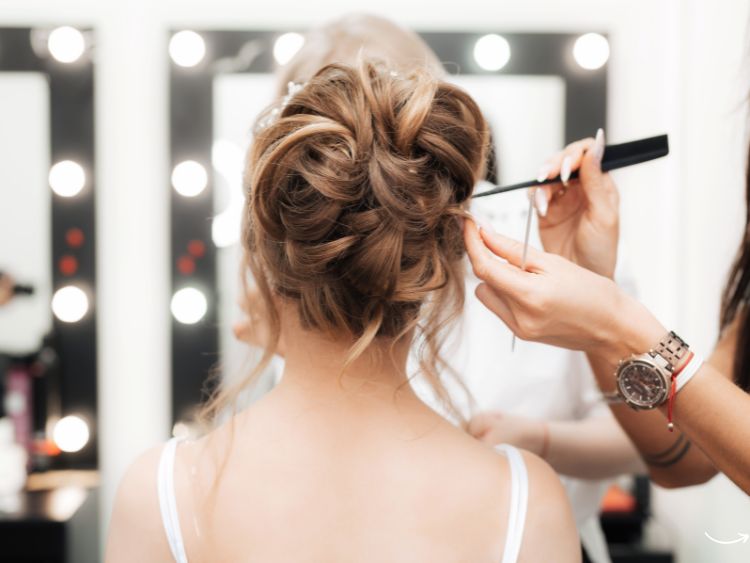When it comes to personal grooming, choosing between a barber and a hair stylist can be a bit of a head-scratcher. Both professionals work with hair, but their skills, services, and specialties can vary significantly. So, what’s the difference between a barber and a hair stylist? Let’s dive into the world of hair care and styling to understand these two professions better.
Understanding the Basics
What is a Barber?
Barbers are hair care professionals primarily trained to cut shorter hair and provide grooming services like shaving and trimming beards. Traditionally, barbershops have been a staple in men’s grooming, offering a place for haircuts, shaves, and social interaction. The classic image of a barber involves a skilled professional wielding scissors, clippers, and razors to create sharp, clean styles.
What is a Hair Stylist?
Hair stylists, on the other hand, often work in salons and are trained to handle a broader range of hair types and styles. They are skilled in cutting, coloring, and styling hair, often catering to a more diverse clientele, including men, women, and children. Hair stylists tend to focus on longer hair and more intricate styling techniques, including updos, perms, and chemical treatments.
Training and Certification
Barber Training
Barber training programs are typically shorter and more focused on the practical skills needed for cutting hair and grooming. Courses usually cover:
- Haircutting techniques: Specializing in short hair.
- Shaving and beard trimming: Mastering the use of straight razors.
- Sanitation and hygiene: Ensuring tools and workspace are clean.
- Basic skin care: Addressing common issues like razor burn.
Barbers often obtain a state license, which requires passing a practical and written exam.
Hair Stylist Training
Hair stylist programs are usually more comprehensive, covering a wide range of services. Training includes:
- Haircutting and styling: Techniques for both long and short hair.
- Coloring: Applying various hair color techniques.
- Chemical treatments: Including perms and relaxers.
- Skin and scalp care: Understanding different hair and scalp conditions.
Hair stylists also need to be licensed, which involves completing a training program and passing an exam.
Services Offered
Barbershop Services
Barbershops typically offer services tailored to men’s grooming needs:
- Haircuts: Focused on short, classic styles like fades and buzz cuts.
- Shaving: Using straight razors for a close shave.
- Beard grooming: Trimming and shaping beards and mustaches.
- Hairline shaping: Creating clean lines around the edges.
Salon Services
Salons, where hair stylists work, provide a broader range of services:
- Haircuts: For all lengths and styles, including trendy and intricate cuts.
- Hair coloring: From highlights to full color changes.
- Styling: Including blowouts, updos, and braiding.
- Chemical treatments: Such as perming, relaxing, and straightening.
- Hair and scalp treatments: Addressing issues like dandruff or damaged hair.
Tools of the Trade
Barber Tools
Barbers rely on a specific set of tools designed for precision and efficiency:
- Clippers and trimmers: For cutting short hair quickly.
- Straight razors: For shaving and detailing.
- Scissors: For finishing touches and detailed work.
- Combs and brushes: For styling and grooming.
Hair Stylist Tools
Hair stylists use a broader array of tools to achieve various styles:
- Shears and razors: For cutting and texturizing hair.
- Blow dryers and diffusers: For drying and styling.
- Curling irons and flat irons: For creating curls or straightening hair.
- Color brushes and bowls: For applying hair color.
Salon vs Barbershop Atmosphere
Barbershop Vibe
Barbershops often have a laid-back, traditional atmosphere. They are places where clients can relax, chat, and enjoy the ritual of grooming. The decor is usually classic, with vintage barber chairs and the iconic barber pole.
Salon Ambiance
Salons tend to have a more modern and upscale feel. They cater to a diverse clientele, offering a range of beauty services. The ambiance is often chic and stylish, designed to make clients feel pampered and special.
Choosing the Right Professional
When to Choose a Barber?
Opt for a barber if you:
- Prefer short haircuts.
- Need a beard trim or shave.
- Enjoy the traditional barbershop experience.
When to Choose a Hair Stylist?
Go for a hair stylist if you:
- Have longer hair or want a specific style.
- Want to color your hair.
- Need specialized treatments or styling.
FAQs
1. Can barbers cut long hair?
While barbers are typically trained to cut shorter hair, some barbers can handle longer styles. However, for more intricate long hairstyles, a hair stylist might be a better choice.
2. Do hair stylists shave beards?
Most hair stylists focus on hair and do not offer beard shaving services. Barbers are the go-to professionals for beard grooming.
3. How often should I visit a barber or hair stylist?
It depends on your hair type and style. For short haircuts, visiting a barber every 4-6 weeks is common. For longer hair, seeing a hair stylist every 6-8 weeks can help maintain your style.
4. Is it more expensive to visit a hair stylist?
Typically, hair stylists charge more due to the range of services they offer and the complexity of their work. However, prices vary based on location and the specific services requested.
Summary
In the battle of barber vs hair stylist, the best choice depends on your personal grooming needs. Barbers are ideal for short haircuts and beard grooming, providing a traditional and straightforward service. Hair stylists offer a broader range of hair services, including coloring and intricate styling, catering to a diverse clientele. Understanding the differences can help you choose the right professional to keep you looking your best.
